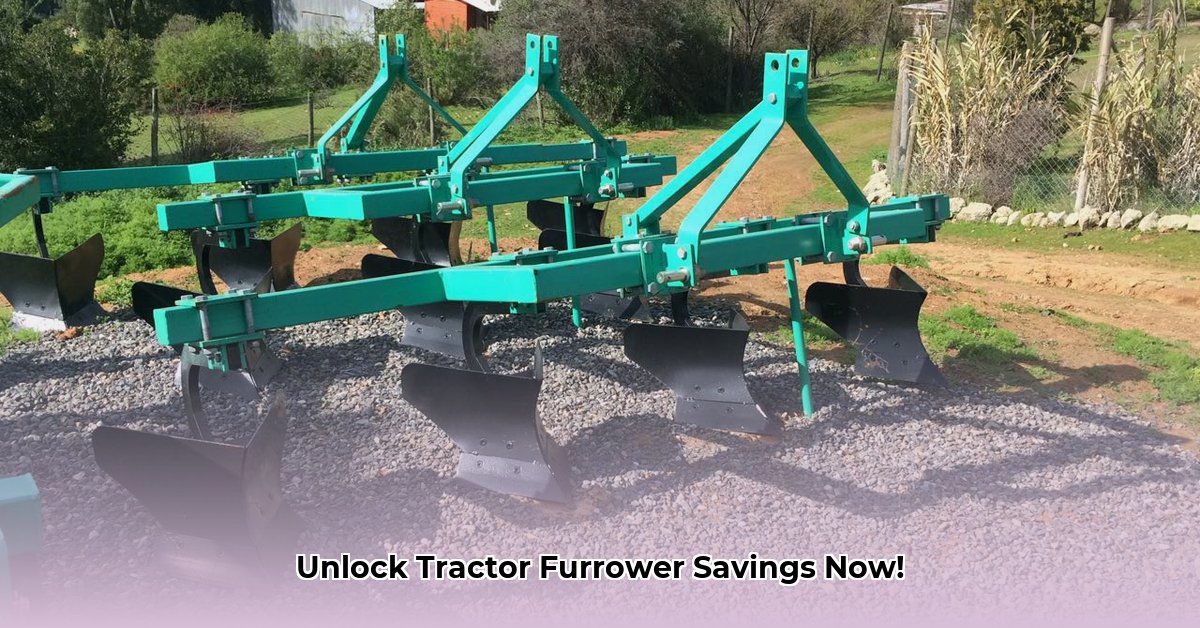
Understanding Tractor Furrower Pricing: A Detailed Breakdown
Buying a tractor furrower involves navigating a range of factors influencing its cost. Understanding these factors is key to getting the best value for your investment. Think of it like buying a car – a basic model differs significantly in price from a luxury model. Let's explore the key price drivers.
Furrower Size and Capacity
The size of the furrower directly impacts its price. Larger furrowers, capable of covering more ground per pass, are inherently more expensive. This scaling is similar to comparing compact cars to large trucks; increased capacity translates to a higher price tag. A smaller furrower suitable for smaller farms might cost between $1,000 and $2,000, while a larger model capable of handling extensive acreage could reach $8,000 to $12,000 or even more. Do you need a furrower that covers large swaths quickly, or will a smaller, more economical model suffice?
Number of Furrows and Planting Precision
The number of furrows a furrower creates also affects its price. A furrower capable of creating multiple furrows simultaneously is more complex, leading to a higher purchase cost. Precision planting is another factor; features like automatic depth control and adjustable furrow width contribute significantly to the overall price. These advanced features are valuable for maintaining consistent planting depth and row spacing, resulting in increased yields and reduced waste. However, they come at a premium.
Brand Reputation and Technological Features
The brand reputation of the manufacturer significantly influences price. Established brands often command higher prices due to their superior build quality, warranties, and readily available parts and service. While lesser-known brands might offer lower initial costs, they may lack the same level of reliability and long-term support. The inclusion of advanced technologies, such as GPS-guided planting or automatic shank adjustments, also adds to the cost, offering increased efficiency and precision but at a higher investment.
Price Ranges and Manufacturer Comparisons: Illustrative Examples
While precise pricing fluctuates based on location, market conditions, and specific model features, we can offer illustrative examples to help guide your decision-making. Remember, these are hypothetical examples for comparison and do not represent specific manufacturers.
| Manufacturer | Model | Key Features | Estimated Price Range (USD) | Pros | Cons |
|---|---|---|---|---|---|
| AgriTech | FT-200 | Basic, fixed furrow width | $1,000 - $2,000 | Budget-friendly, easy to maintain | Limited features, potentially shorter lifespan |
| FarmMaster | FM-500 | Adjustable width, basic depth control | $3,000 - $5,000 | Versatile, improved depth control | Higher upfront cost |
| PrecisionAg | PA-1000 | Automatic controls, advanced technology | $8,000 - $12,000 | High precision, user-friendly, durable | Significant initial investment |
It is crucial to obtain current quotes from multiple dealers to establish accurate pricing for your specific needs and location before making a purchase. Remember, the cheapest option does not always equate to the best long-term value. Consider factors such as maintenance costs and overall lifespan.
Smart Strategies for Purchasing a Tractor Furrower
Buying a tractor furrower requires careful consideration. Here's a step-by-step guide to help you navigate the purchasing process effectively:
- Define Your Needs: Determine the size of your land, the type of crops you'll be planting, and the level of precision required. This will narrow down your options.
- Research Manufacturers: Investigate various manufacturers, focusing on their reputation, warranties, and available support.
- Compare Models and Features: Carefully compare the features and specifications of different models to find the best fit for your needs and budget. Consider factors such as the number of furrows, adjustable width, and automatic depth control.
- Obtain Multiple Quotes: Get price quotes from several dealers to compare prices and explore potential discounts.
- Consider Used Equipment: Explore the used market for potential cost savings. Thoroughly inspect any used equipment before purchasing.
- Factor in Long-Term Costs: Factor in ongoing maintenance, repair, and parts replacement costs when evaluating the overall value of each option.
By following these steps, you can make an informed decision. Remember, investing in quality equipment can save money and increase efficiency in the long run.
Key Takeaways:
- The size and capacity of a furrower are major price determinants, with larger models commanding higher prices.
- Advanced features like automatic depth control and adjustable furrow width increase cost but enhance precision and efficiency.
- Brand reputation significantly impacts pricing, with established brands typically carrying a premium.
- Thorough research, comparing models and quotes from multiple dealers, is essential for finding the best value.